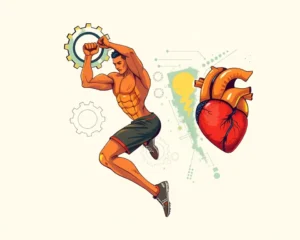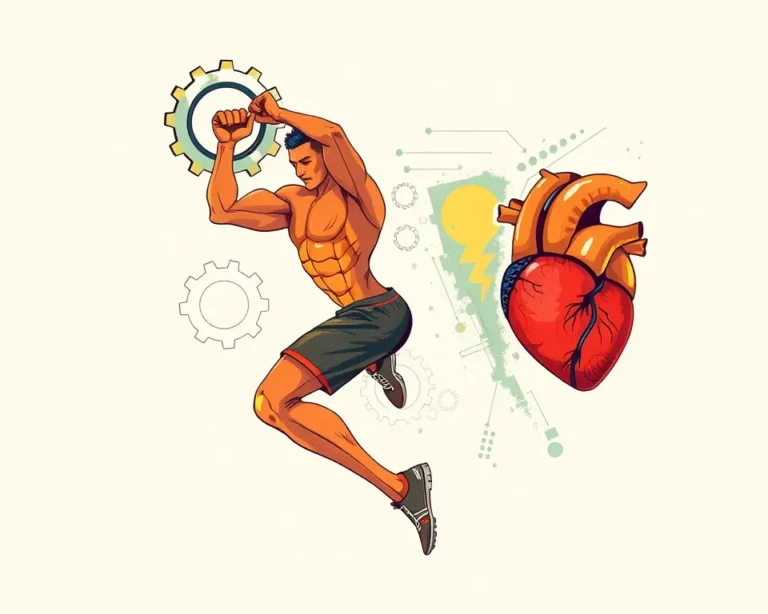Seated rowing, often performed on a rowing machine (also known as an ergometer or erg), offers a comprehensive and effective workout suitable for various fitness levels. Unlike some exercises that isolate specific muscle groups, seated rowing engages nearly every muscle in your body, providing a full-body workout with numerous health benefits. Whether you’re a seasoned athlete or just starting your fitness journey, incorporating a seated rowing routine into your exercise regimen can significantly improve your overall health and well-being.
1. Full-Body Workout
Rowing is a total-body workout, meaning it strengthens major muscle groups in your arms, legs, and core and increases cardiovascular endurance . It engages approximately 86% of your muscles . A single rowing stroke works your hamstrings, core, arms, glutes, and back muscles . This comprehensive engagement leads to balanced muscle development and improved overall strength.
- Lower Body: Rowing heavily involves the legs, particularly the quadriceps, hamstrings, and glutes, as you push off the footrests during each stroke .
- Upper Body: The back, shoulders, and arms (especially the biceps) are engaged as you pull the handle towards your body .
- Core: The abdominal and oblique muscles stabilize your body throughout the rowing motion, contributing to core strength .
2. Low-Impact Exercise
One of the most significant advantages of seated rowing is that it is a low-impact exercise . This means it places minimal stress on your joints, making it an ideal option for individuals with joint pain, arthritis, or those recovering from injuries . The smooth, controlled movements of rowing reduce the risk of jarring or straining your joints, allowing you to exercise comfortably and safely.
3. Cardiovascular Health Improvement
As a cardio exercise, rowing strengthens your cardiovascular system, which includes your heart, blood vessels, and blood . Rowing is an excellent way to develop the heart’s ability to pump blood to the body . The repetitive, rhythmic nature of rowing elevates your heart rate, improving cardiovascular endurance and overall heart health. Regular rowing can lead to:
- Increased Heart Strength: Your heart works harder to transport more blood, improving its strength .
- Improved Circulation: Enhanced blood flow delivers more oxygen and nutrients to your muscles and organs .
- Reduced Risk of Heart Disease: Rowing may also help lower LDL cholesterol levels, which is often linked to heart disease .
4. Increased Muscular Strength and Endurance
Rowing builds both power and endurance . Rowing strengthens and tones your muscles and improves your endurance . The rowing motion requires both strength and stamina, helping you build muscular strength and endurance in both your upper and lower body . This can translate to improved performance in other physical activities and enhanced overall fitness.
5. Calorie Burning and Weight Management
Rowing is up there in terms of burning calories . Rowing is an efficient way to burn calories and manage your weight . The full-body engagement of rowing torches a significant number of calories in a single session, making it an effective tool for weight loss or maintenance. The number of calories burned depends on factors such as intensity, duration, and individual metabolism.
6. Posture Improvement
Rowing improves posture . Strengthening the muscles in your back can help protect your shoulders and spine . Rowing can counteract the effects of prolonged sitting and tech neck . The exercise engages the muscles in your back and shoulders, promoting proper alignment and stability . This helps counteract the effects of prolonged sitting and poor posture, reducing the risk of back pain and stiffness .
7. Stress Reduction
Like many forms of exercise, rowing can be a great stress reliever . The repetitive, rhythmic motion of rowing can have a meditative effect, helping to calm your mind and reduce stress levels . Endorphins released during exercise act as natural mood boosters, further contributing to stress reduction and mental well-being .
8. Versatile and Accessible
Rowing is a versatile friend . Rowing is an accessible exercise for most people . Whether you’re new to the gym or a seasoned pro, you can find value in the seated row . Rowing machines are widely available in gyms and fitness centers, and they are relatively easy to use . The intensity of rowing can be easily adjusted to suit your fitness level, making it a suitable exercise for beginners and advanced athletes alike . Additionally, you can do seated rows with a resistance band if you don’t have access to gym equipment .
9. Improved Range of Motion and Joint Strength
Rowing can improve range of motion and joint strength . If you struggle with arthritis, you’ve probably heard the phrase “motion is lotion .” The full range of motion involved in rowing helps improve joint flexibility and reduce stiffness . This is particularly beneficial for individuals with arthritis or other joint conditions.
10. Injury Prevention and Rehabilitation
Rowing can protect against injury, improves posture, and even makes daily tasks a little easier . Strengthening the muscles around your joints can help prevent injuries and promote stability . Rowing is often used in rehabilitation programs to help individuals recover from injuries and regain strength and mobility .
Integrating Seated Rowing Into Your Routine
To maximize the benefits of seated rowing, consider the following tips:
- Proper Form: Maintain good posture and engage your core throughout the exercise. Focus on using your legs, back, and arms in a coordinated manner .
- Warm-Up: Begin with a few minutes of light cardio and stretching to prepare your muscles for exercise .
- Cool-Down: End your rowing session with a few minutes of gentle stretching to improve flexibility and reduce muscle soreness .
- Consistency: Aim for at least 2-3 rowing sessions per week to experience the full range of health benefits .
- Variety: Incorporate different rowing workouts, such as interval training, steady-state rowing, and pyramid workouts, to keep your routine engaging and challenging .
Incorporating seated rowing into your fitness routine can provide a multitude of health benefits, ranging from improved cardiovascular health and muscular strength to stress reduction and injury prevention. With its low-impact nature and full-body engagement, seated rowing is an excellent exercise option for individuals of all ages and fitness levels. So, hop on a rowing machine and row your way to better health and well-being.







